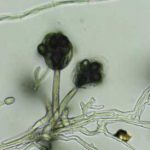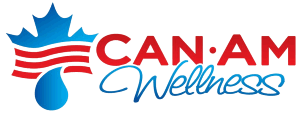Mold Air Purifiers
I. Introduction
Some of the most frequently asked questions we receive from visitors to our site involve the issue of mold. Most people already understand their seasonal problems with pollens, but are confused as to whether or not mold in their homes or offices might be contributing to their asthma problems, allergy symptoms, or poor health. The questions below explore the issue of mold and possible solutions with and without air purifiers. We will review which units best address this problem from the BelKraft air purifiers.
II. Is Mold Truly a Problem?
Many people suspect that mold in their homes may be causing their health problems, but are unsure if mold air purifiers will help. Others find the mold or musty smell in their homes unpleasant, but don’t believe it causes problems; they just want their homes to smell fresher and to have a clean indoors. What is the truth about mold? Is it a problem or a part of nature that we have to accept? If it is a problem, how much of a problem is it and is there anything to be done about it? Yes, mold is an aspect of nature and plays an important part in the decay of leaves and trees. So mold is good – outdoors! Molds inside your home or workplace are not good. Airborne mold spores inside your home really become a problem when they land on moist or wet surfaces. Then they are free to reproduce via the production of tiny invisible spores, and rapidly increase to amounts which cause humans discomfort and even illness.
III. Exactly What Health Problems?
Mold particles are small enough to pass through the cilia in your sinuses and too small to be easily exhaled, so they can become lodged in your lung tissue. In comparison, larger particles such as dust are usually caught by the cilia before they enter the lungs. (Some molds, called mycotoxins – they’re the products of mold metabolism – are potentially toxic). Thus molds which are inhaled do cause allergic reactions in many people – generally in the form of runny or sneezing noses, red eyes, rashes, and the generally unwell feeling you get when you have a cold or suffer from hay fever. The reaction is often instant but sometimes may be delayed for hours. Asthmatic people can also have allergic reactions to the inhalation of mold. As is often the case, infants, children, and the elderly can be more greatly affected by mold inhalation than healthy adults.
Most mold spores range from 3-100 microns in size but some can be as small as 1 micron. When looking at air purifiers to handle mold, it is important to find one that takes out at least 3-micron size particulates or smaller. So HEPA air purifiers that are typically rated to .3 microns or one third the size of the smallest mold spore are appropriate.
IV. How Do I Get Rid of it?
You cannot entirely rid your home of mold, however, you can substantially reduce it. If your house is old, there is a greater potential for mold problems as anyone with a musty old basement knows. Newer, tightly built homes that don’t have good airflow can also be problematic. Office buildings, particularly older ones are often rife with mold.
Extensive water damage that has resulted in the significant growth of mold may require removal by a licensed contractor. Smaller, visible areas of mold should be cleaned up with household cleaners and the areas dried. However, the mold is often not visible because it is in hidden places. The mold may reside on a surface but when the surface is disrupted, the spores become airborne and begin to cause problems for people. The spores generally settle down in time but whenever they are disrupted they take to the airflow again. That’s where a continuously running or mold air purifiers can be of great assistance in getting a clean indoors. If you can’t entirely removed the mold or even find it, you can quickly and easily remove the airborne spores with mold air purifiers. If you allow the mold spores to remain floating around inside and they subsequently land in a wet area, the process begins again with the growth of new mold.
Mold air purifiers with HEPA (high efficiency particulate arresting) filtration systems are generally most effective at removing the airborne spores. Mold spores don’t reproduce without moisture. When airborne mold spores are pulled into an air purifier, the HEPA filter traps them and they die. Mold does not reproduce in the filters since there is no moisture in air purifiers.
V. Conclusion
Whenever possible, remove the mold completely and take steps so that it doesn’t return. In the many cases when that is not possible, use a high quality, HEPA mold air purifiers to continually absorb the airborne spores. Such air purifiers are made to run 24/7 and actually work more efficiently when allowed to do so. This will greatly help in the reduction of mold spores in the airflow you breathe. Since mold does have the potential to slide right past the protective cilia in the body and end up in the lung tissue, it’s important to stop it before it has the chance to reach your nose or those of your loved ones, especially infants and children. The inhalation of mold spores can cause allergic reactions in sensitive people and asthmatics, and can cause hay fever or cold-like symptoms in healthy, non-allergenic people. Mold has to go.

Mold Spore
